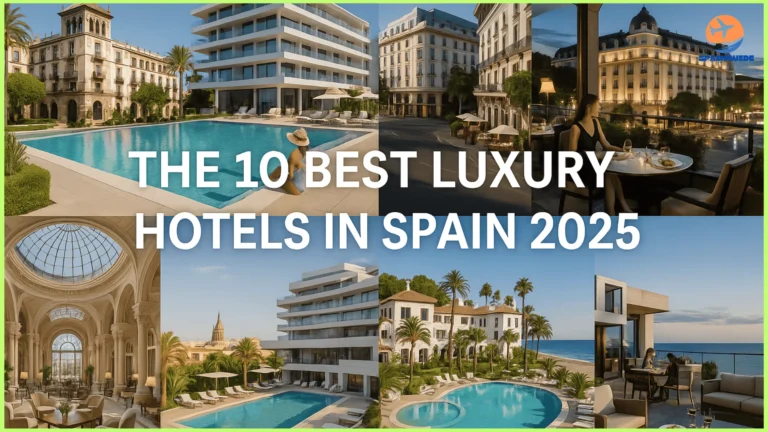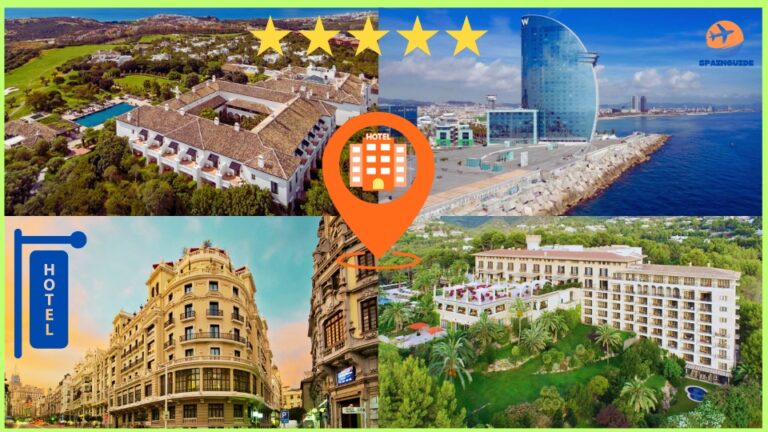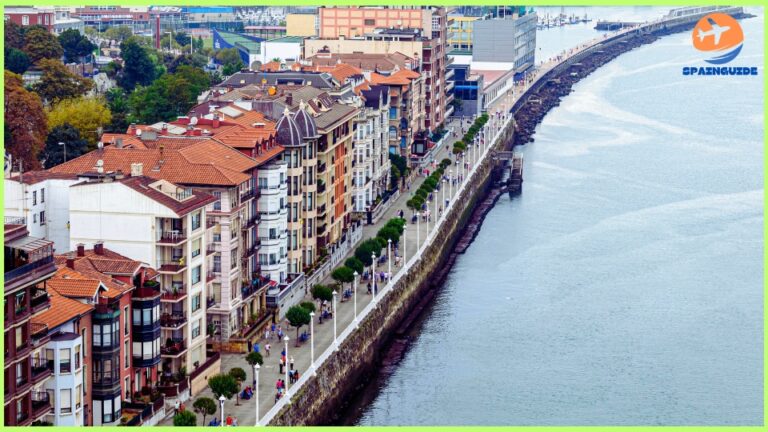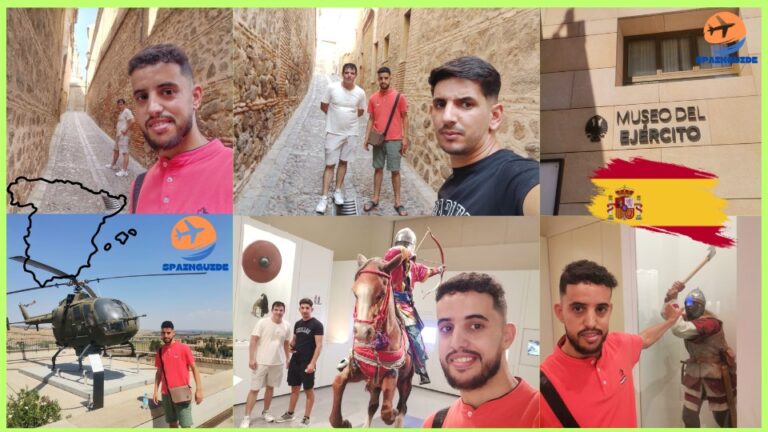Have you ever dreamed of visiting a place where history, art, and spirituality intertwine in the most spectacular way? Welcome to Sagrada Familia, Barcelona’s crown jewel and Antoni Gaudí’s magnum opus. This basilica is not just an architectural masterpiece; it’s a story written in stone, a poem crafted in spires and stained glass. Let’s dive into the fascinating world of Sagrada Familia, where every corner whispers tales of faith, creativity, and relentless human spirit.
Sagrada Familia Entry Ticket with Audio Guide
The Vision Behind Sagrada Familia
Antoni Gaudí: The Mastermind
Born in 1852, Gaudí’s work is characterized by its organic forms, intricate details, and vibrant colors, often inspired by nature. His deep religious faith significantly influenced his designs, making Sagrada Familia not only a tribute to his artistic genius but also a profound expression of his spirituality.
Gaudí’s Inspiration and Architectural Style
Gaudí’s inspiration for Sagrada Familia came from a combination of Gothic and Art Nouveau forms, infused with his unique style. He envisioned the basilica as a structure that would unite heaven and earth, where every element—from the towering spires to the smallest carvings—would tell a story of Christian faith. The use of hyperboloid structures, helicoidal columns, and organic shapes makes Sagrada Familia a true architectural marvel.
The Construction Timeline
Early Beginnings
The construction of Sagrada Familia began in 1882, originally designed by architect Francisco de Paula del Villar. However, Gaudí took over the project in 1883 and transformed it into his lifelong passion. Gaudí dedicated over 40 years of his life to the basilica, and at the time of his death in 1926, only a quarter of the project was complete.
Interruptions and Delays
Throughout its construction, Sagrada Familia has faced numerous interruptions and delays, including the Spanish Civil War, which caused significant damage to Gaudí’s workshop and many of his original plans. Despite these setbacks, the project continued, driven by the determination of countless architects, artists, and craftsmen who have contributed to its ongoing construction.
Modern Efforts and Current Status
Today, the construction of Sagrada Familia is overseen by the Foundation Board of Trustees, with funding primarily from ticket sales and private donations. Modern technology has significantly accelerated the building process, with the use of computer-aided design (CAD) and 3D printing. The basilica is now estimated to be completed by 2026, marking the centenary of Gaudí’s death.
Architectural Marvels of Sagrada Familia
Exterior Facades
Nativity Facade
The Nativity Facade, completed during Gaudí’s lifetime, is dedicated to the birth of Jesus Christ. It features intricate carvings of animals, plants, and biblical figures, celebrating the joy and wonder of the Nativity story.
Sagrada Familia Entry Ticket with Audio Guide
Passion Facade
In stark contrast, the Passion Facade, constructed in the late 20th century, depicts the suffering and crucifixion of Christ. Its harsh, angular lines and dramatic sculptures evoke the pain and sacrifice of Jesus’ final days.
Glory Facade
The Glory Facade, still under construction, will be the largest and most monumental of the three. It will represent the celestial glory of Jesus, encompassing themes of life, death, and resurrection.
Interior Wonders
The Columns
Stepping inside Sagrada Familia is like entering a forest of stone. The towering columns, designed to resemble tree trunks, branch out to support the roof, creating a canopy of intricate patterns and light.
The Stained Glass Windows
Gaudí’s use of stained glass transforms the basilica’s interior into a kaleidoscope of colors. Each window is carefully designed to bathe the interior in natural light, reflecting the time of day and creating a dynamic, ever-changing atmosphere.
The Vaults
The soaring vaults, reaching heights of up to 45 meters, are adorned with geometric patterns and natural motifs. These structures not only enhance the basilica’s aesthetic appeal but also exemplify Gaudí’s innovative engineering techniques.
Symbolism in Every Corner
Religious Symbolism
Every detail, from the sculpted biblical scenes on the facades to the symbolic use of numbers and geometry, reflects Gaudí’s deep Catholic faith and his desire to create a “bible in stone.”
Nature and Geometry
Gaudí’s fascination with nature and geometry is evident throughout the basilica. The organic forms and mathematical precision found in natural structures are replicated in the architecture, symbolizing the harmony between God’s creation and human ingenuity.
Visitor Experience
Guided Tours
Guided tours are highly recommended to truly appreciate the intricacies of Sagrada Familia. Knowledgeable guides provide insights into Gaudí’s vision, the basilica’s history, and the significance of its various elements.
Sagrada Familia Entry Ticket with Audio Guide
Audio Guides and Apps
For a more flexible experience, audio guides and smartphone apps are available, offering detailed commentary and allowing visitors to explore at their own pace.
Best Times to Visit
To avoid the crowds and enjoy a more serene visit, early mornings or late afternoons are the best times to explore Sagrada Familia. Weekdays tend to be less busy than weekends, providing a more intimate experience.
Impact on Barcelona
Cultural Significance
Sagrada Familia is not just a church; it’s a cultural icon that embodies the spirit of Barcelona. It has become a symbol of the city’s artistic heritage and a testament to its enduring creativity and resilience.
Economic Influence
As one of the most visited landmarks in Spain, Sagrada Familia significantly boosts the local economy. It attracts millions of tourists each year, supporting local businesses and contributing to the city’s global reputation as a cultural and architectural hub.
Challenges and Controversies
Funding Issues
Financing the construction of Sagrada Familia has always been a challenge. Initially funded by private donations, the project now relies on ticket sales and philanthropic contributions. Despite these efforts, securing sufficient funds remains a constant concern.
Legal and Urban Challenges
Sagrada Familia’s construction has also faced legal and urban challenges, including disputes over building permits and the impact on the surrounding neighborhood. These issues highlight the complexities of completing such a monumental project in a modern urban setting.
Future Prospects
Projected Completion
The projected completion date of Sagrada Familia is 2026, marking the 100th anniversary of Gaudí’s death. This milestone is eagerly anticipated by the global community, symbolizing the culmination of over a century of dedication and craftsmanship.
Innovations in Construction
Modern construction techniques, including the use of 3D printing and advanced modeling software, are revolutionizing the way Sagrada Familia is built. These innovations ensure that Gaudí’s vision is realized with unprecedented precision and efficiency.
Sagrada Familia stands as a beacon of faith, creativity, and perseverance. It is a living testament to Antoni Gaudí’s genius and the collective effort of countless artisans, architects, and supporters. As we look forward to its completion, Sagrada Familia continues to inspire and awe, drawing visitors from around the world to marvel at its intricate beauty and profound symbolism.
Sagrada Familia Entry Ticket with Audio Guide
FAQs
How can I buy tickets for Sagrada Familia?
Tickets for Sagrada Familia can be purchased online through the official website or at the Basilica’s ticket office.
Are there any special events held at Sagrada Familia?
Yes, Sagrada Familia hosts various events throughout the year, including religious services, concerts, and cultural events. Check the official website for the latest schedule and event details.
Can I attend a mass at Sagrada Familia?
Yes, regular masses are held at Sagrada Familia, and visitors are welcome to attend. The schedule is available on the basilica’s official website.
What are some nearby attractions to visit?
Nearby attractions include Park Güell, another masterpiece by Gaudí, as well as the Gothic Quarter, Casa Batlló, and La Pedrera. Barcelona offers a rich tapestry of cultural and historical sites worth exploring.







